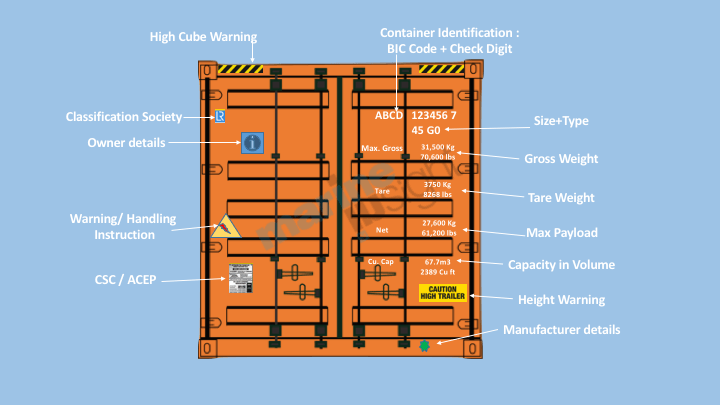JSL is involved in sea container trading business and interested in buying and selling all kind of shipping containers
- GP CONTAINERS 20′, 20′ HC, 40 OR 40HC. (Right now available at Jabel Ali/ Dubai/ Qatar)
- REFERRER UNITS 20, 40 OR 40 HC. (Availability based on request. Depot @Far East Load ports)
- ISO TANK CONTAINERS. (Long Term Lease – Minimum 02 Years)
- FLAT RACK CONTAINERS. (Case to Case Availability)
- OPEN TOP CONTAINERS. (Case to Case Availability)
Further JSL can assist in hiring containers on long-term lease for Multinational companies, or shipping line. Anywhere in the world If you want to buy or sell the container we can offer you guaranteed better price.

- Container Number – The container marking is the primary identification marking on the door end of an ISO container. It consists of seven numbers and four letters, which are allotted by the ISO to identify every container to its owner. The number is unique for everyone and is registered for the records with Bureau International des Containers (BIC), Paris.Suppose the container number as shown in the diagram is – ABCD 123456 7
Here the first 3 letters, i.e. ABC denotes- code for the owner of the container.
The 4th letter D provides -the container category.
The first six numbers, i.e. 123456 is – the serial numbers of the container.
The last number, i.e. 7 is- the check digit which is used to validate if the owner or product group code and the registration number have been accurately transmitted. - Owner’s Logo – The shipping line or container vendor’s logo/name is provided on the end door.
- ISO Code – The ISO container code is stenciled below the container identification number and provides the details of the type of container, i.e. GP (for general purpose), DV (for a dry van) etc. and also denote the size of the container. E.g. if the ISO code below the container identification number is 45 Go, the first number, i.e. “4” denotes the code length (40 ft) and the second number, i.e. “5” is the code for width. The last two alpha-numeric character shows the type and sub-type of the ISO container.
- Weights & Payload – All the details of container weight and cargo weight are also marked in the end door.
- The weight of the shipping container: The true weight of an empty container provided by the manufacturer post the manufacturing process.
- Payload: This is the maximum cargo weight an approved ISO container can carry
- Gross Weight: The total weight of container and cargo within the safe limit
- Approved Classification society label – Before the container is used by a shipping company for cargo transfer; it is tested for seaworthiness and compliance to the ISO standards by an approved classification society. The label of the class is also provided on the end door of the container.
- Cube or volume – The cubic capacity or the volume of the container is marked in the end door.
- Warning and Operational Signs – The container may carry various warning labels and signs depending upon its type and cargo it is carrying. E.g. a heightened container will contain the height or warning stripes on the top part of the container. Similarly, a container carrying hazardous cargo will carry a warning sign about the type of hazard or cargo associated with it.
- Certifications – Different certificates which are occupied by the container needs to be displayed using plates, such as:
- CSC plate: Container Safety Convention plate showing the ISO container has been inspected and tested by approved authorities. It also contains details of the owners and other technical specifications.
- ACEP: It stands for Approved Continuous Examination Programme and is provided in the container. This is a safety program for shipping containers, wherein the container under it has to undergo an extensive inspection in a container depot every 30 months of its service. The container owner will renew the ACEP every 10 years.


